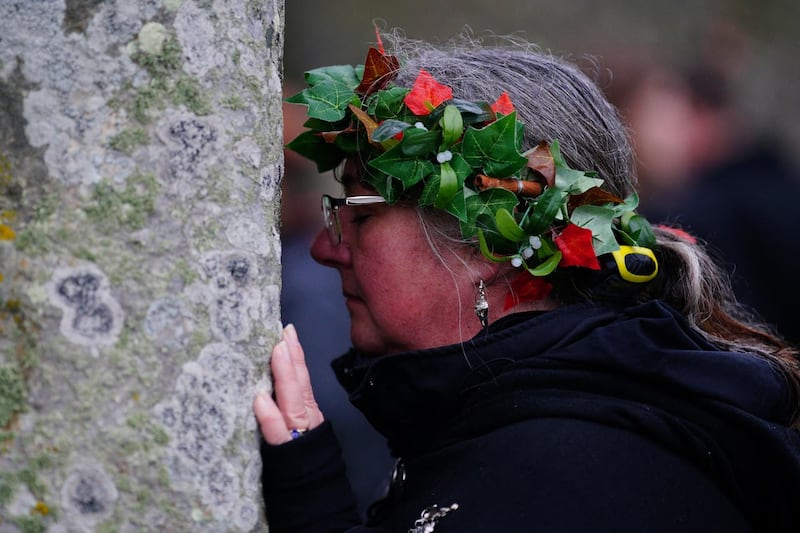Thousands of people greeted the sun with cheers as it rose over Stonehenge for the winter solstice.
Those who observed the spectacle at the neolithic monument in Wiltshire encountered a chilly morning accompanied by clear skies as the sun glinted over the horizon to mark the shortest day.
Scott Ashman, from English Heritage, said: “It was fantastic to welcome approximately 4,500 people to Stonehenge this morning to celebrate winter solstice.

“We were delighted that a further 100,000 people watched the sunrise live online from right around the world.
“It was an enjoyable and peaceful celebration despite the damp and misty weather, and it was great to see so many families enjoying themselves around the monument.
“We’d like to wish everyone who joined us this morning a safe trip home and a very happy Christmas.”
Stonehenge is a monument built on the alignment of the midsummer sunrise and the midwinter sunset.
It is believed that solstices have been celebrated at Stonehenge for thousands of years.

The date of the equinoxes and solstices varies because the Gregorian calendar does not exactly match the length of the tropical year – the time it takes the Earth to complete an orbit around the Sun.
To realign the calendar with the tropical year, a leap day is introduced every four years and when this happens, the equinox and solstice dates shift back to the earlier date.








